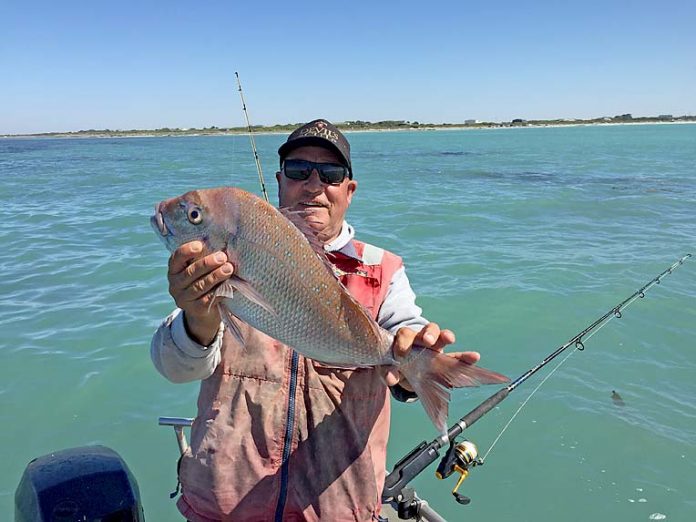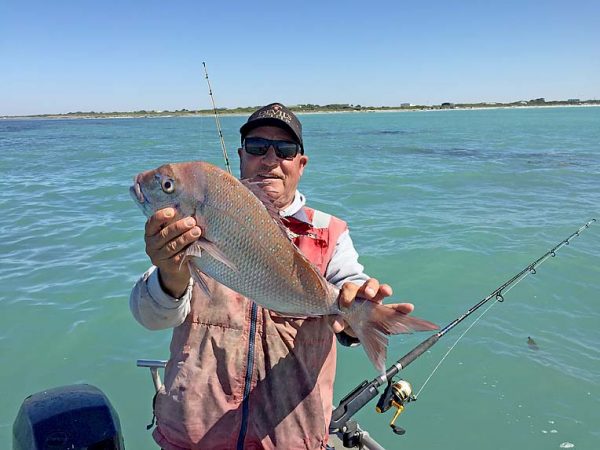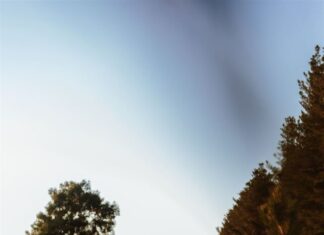

A KEEN recreational fisherman has claimed some of the snapper fishing ballot applicants used the names of their family members – including babies – to bolster their chances of being selected.
Eight Mile Creek resident Malcolm Lockwood was one of 3624 applicants in the first recreational snapper fishing ballot, but was not successful in receiving tags.
Mr Lockwood expressed disappointment at missing out on the ballot, which will allow 606 amateur anglers across South Australia to catch five snapper, but was concerned about the legitimacy of some applicants.
He has claimed some anglers used the names of their wives, parents and children – despite the ballot having an age limit of 10 – to increase their chances of receiving the tags.
“What makes me wild is I was talking to a guy who put his name into the ballot, as well as his wife and his son,” he said.
“His son is 18 months old.
“He told me his wife got the tags, but had never touched a fish and she never will.
“He told me the only reason he put her name down was so he could have a better chance of getting the tags.”
Earlier this month, the State Government announced a ballot system as part of a trial designed to protect the state’s snapper stock.
Primary Industries and Regional Development Minister Tim Whetstone said up to 606 fishers would be randomly selected to receive five tags each, including 303 allocated for residents from the Limestone Coast, Kangaroo Island and Fleurieu Peninsula – an area the government defined as the South East.
A breakdown of eligible postcodes shows Mount Gambier fishers – 5290 – were the most successful in the Limestone Coast, with 64 anglers receiving tags.
45 residents within the 5291 area – which includes all localites from the state border to Port MacDonnell, Carpenter Rocks, Glencoe, Mingbool and outlying parts of Mount Gambier – received tags in the ballot.
In Naracoorte, 22 fishers were successful in the ballot and eight Bordertown anglers have received the tags.
Across the Limestone Coast, 230 fishers have received the tags.
Mr Lockwood raised concerns about individuals who received the tags not using them, resulting in skewed reporting data.
“My target fish is snapper because I love catching it and I love eating it.
“It is ridiculous that I live on the beach, right on Danger Point and I cannot catch snapper because I do not have tags, but someone from Bordertown can.
“There are people in Mount Gambier, Bordertown and these other areas who might not even use them, which I think is a waste.
“My concern is if the tags are not used, the advisory committee will think there is no snapper around.”
Mr Lockwood said while it was important to ensure the sustainability of snapper in South Australian waters, he did not believe there was a drastic decline of the iconic fish in the South East.
“Already I have pulled 17 size snapper out of my craypots since the ban has been in place,” he said.
“Another time, I went out and kept on catching snapper which were 45cm – obviously I had to throw them back, but I had to keep moving the boat because that was all I was catching.
“There is absolutely no shortage of snapper here.”
In a statement, a State Government spokesperson said ballot applicants did not need to provide photographic identification.
“It is an offence to provide false information and penalties may apply,” the statement said.
“If a family member was nominated, that person is the legal tag recipient and must be present when the snapper tag is used and meet all reporting requirements.
“Applicants under 10 years of age were not eligible to enter the snapper tag ballot.
“Tags cannot be transferred and successful tag recipients must be present at all times when fishing for snapper.”
The spokesperson said fisheries officers will conduct regular patrols to carry out inspections during the snapper season.
“During these inspections they will be verifying the identity of registered recreational and charter Snapper tags users and individuals will be required to provide identification,” the statement said.





